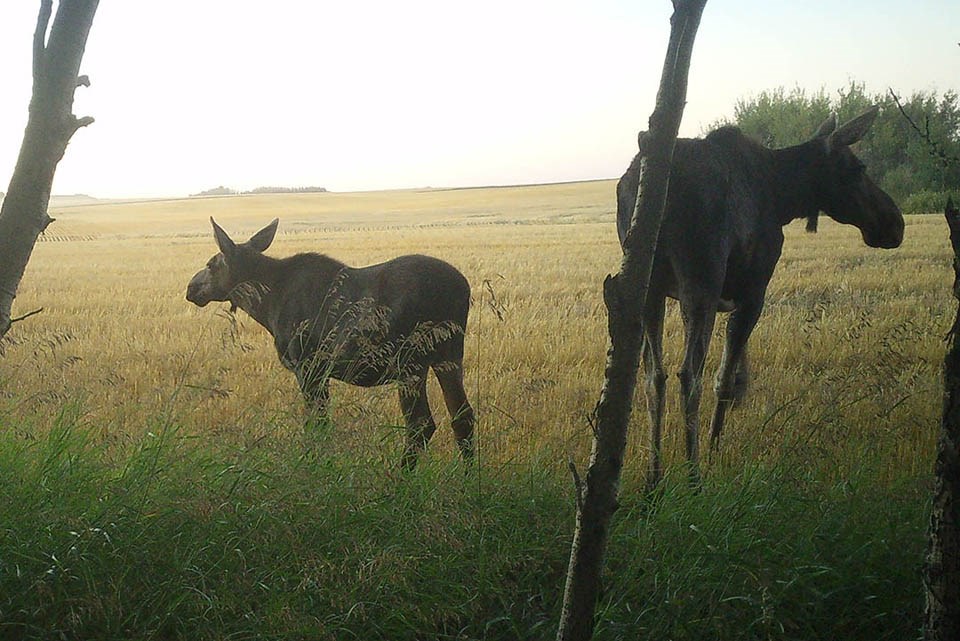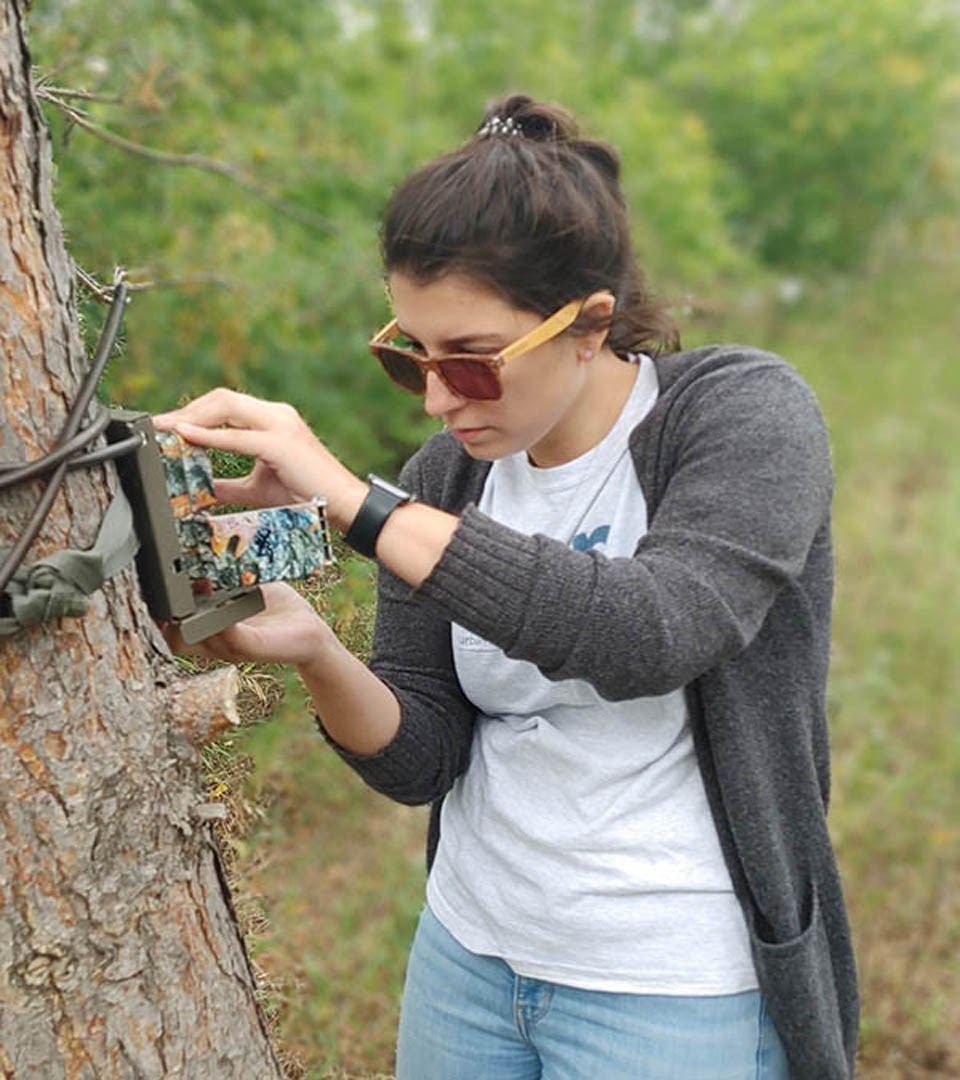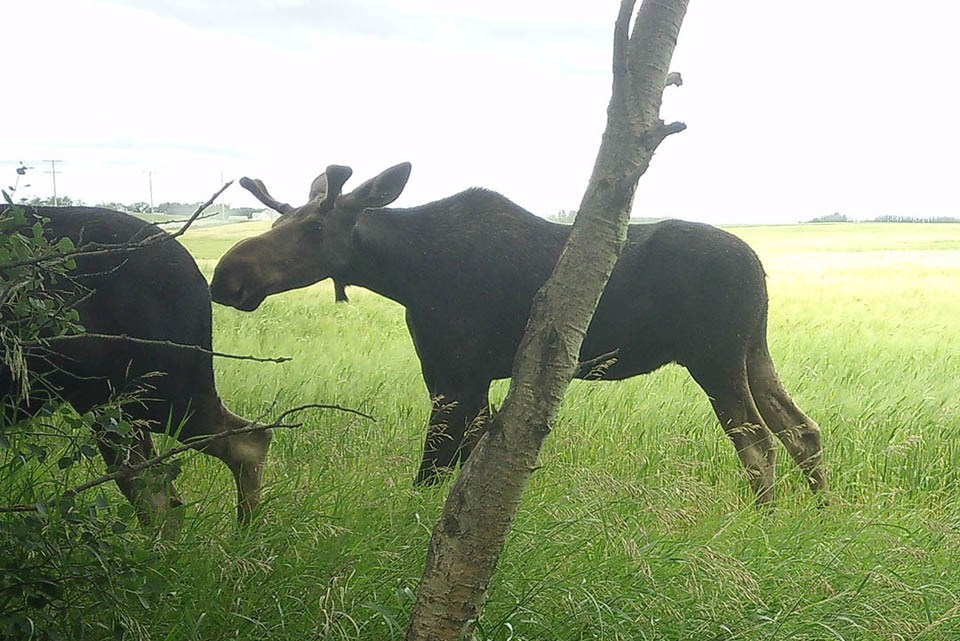SASKATOON — Have you ever seen a moose in-person?
They’re big, they’re heavy, and they typically live in Northern forests. But there are still plenty of moose nearby – some even entering the city limits of Saskatoon.
Kaitlyn Harris, a University of Saskatchewan (USask) PhD candidate in Animal and Poultry Science in the College of Agriculture and Bioresources with supervisor Dr. Ryan Brook (PhD), has been studying urban wildlife in and around Saskatoon. Harris’s moose research was recently published in Alces - A Journal Devoted to the Biology and Management of Moose.
Here are five facts about moose (and other animals) in Saskatoon:
Large species like moose aren’t afraid of coming into city limits
Remember in 2021 when a moose crashed through windows of a Saskatoon elementary school? Harris certainly does – and she said while there’s always been interest in moose research, that event sparked a new urgency of wanting to know more about moose in the city.
With 30 trail cameras over three years, Harris said she recorded 249 moose photos in Saskatoon. She noted that’s not saying there’s more than 200 moose in Saskatoon – the same moose could end up in multiple photos – but we share this land with some incredible (and large) animals.
“I’m always left with this amazement of how we share the landscape with so many species, and especially when we’re looking at it in terms of such a large animal like a moose,” she said.
Moose occurrences in the city are higher in the summer
Of the almost 250 photos of moose Harris took over the last three years, she never got one in February – and most of them came in July.
It’s not enough data to definitely say there is a trend or a pattern, but Harris said it starts to teach researchers more about the potential seasonality of moose in the city and when people should be even more aware.

With 30 trail cameras over three years, USask researchers have recorded 249 moose photos in Saskatoon. | Photo courtesy USask
There are lots of different “wild” animals in Saskatoon
Moose aren’t the only things to show up on Harris’ cameras.
Over the past three years, Harris said she compiled a list of 21 different mammals on her “species list” of recurring urban wildlife, and that’s not counting the animals that are rarer.
Foxes, raccoons, coyotes – there are a sizeable number of animals that exist in the city limits with humans, and Harris said it’s important to remember we are sharing the area with them.
“Raising peoples’ awareness that we share the landscape, and how to share the landscape, not with moose but all species ... has always been the biggest thing for me with this research.”
Be mindful and respectful of wildlife in the city
Harris acknowledged that coming face-to-face with a moose can be scary, and moose can be aggressive if backed into a corner.
Conservation officers can be called to safely remove a moose that is a danger to itself or other people – like what occurred in the 2021 elementary school incident.
Harris said keeping your distance and not trying to get up close are two simple things you can do if you do encounter a moose. Moose are more likely to be out in Saskatoon in the summertime and also at night – important information for people sharing a city with these large mammals.
Moose are here to stay

Kaitlyn Harris, PhD candidate in Animal and Poultry Science in the USask College of Agriculture and Bioresources. | Photo courtesy USask
One of the most incredible images Harris said she saw in her photos was the presence of freshly-born moose calves within the city limits of Saskatoon.
Between that and an increasing number of moose occurrences year-to-year, Harris said we could be sharing the landscape with a growing population of moose for many years to come
Harris said there are numerous factors keeping moose nearby instead of their colder northern forests, such as the patches of wetland in the area and moose’s affinity for the pulse crops grown in nearby agricultural fields.
At the end of the day, Harris said it’s amazing that animals of this size and scope are living so closely alongside humans.
“We are an urban island in a sea of agriculture and moose have typically been thought of as a forest species. We never would have thought, 15 or 20 years ago, that we would have an established breeding population of moose that use part of Saskatoon and they’re able to survive here ... they’re here, they’re probably here to stay.”
— Submitted by USask Media Relations




